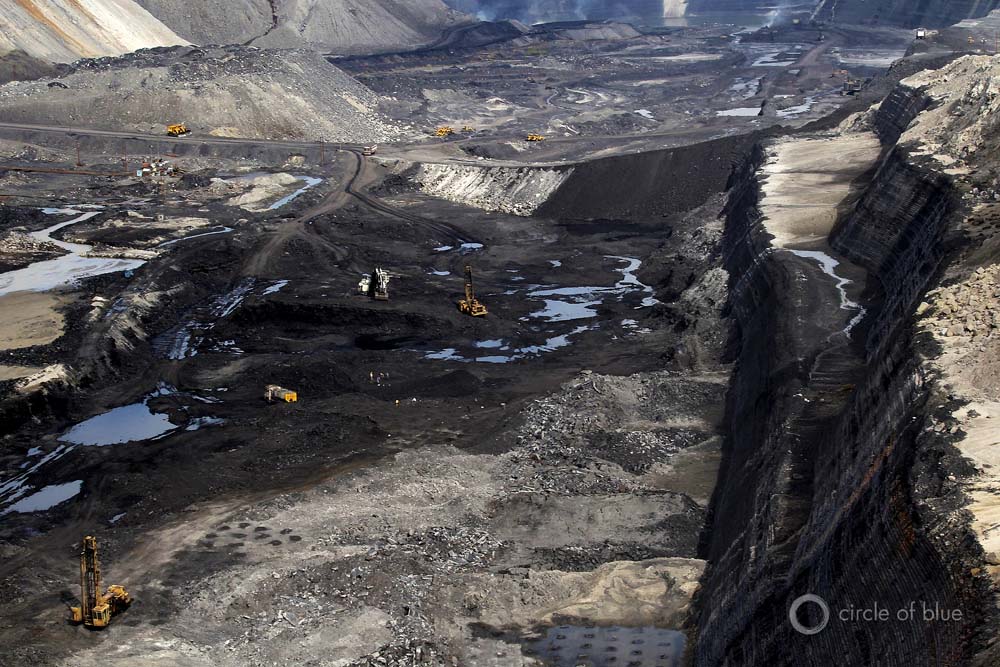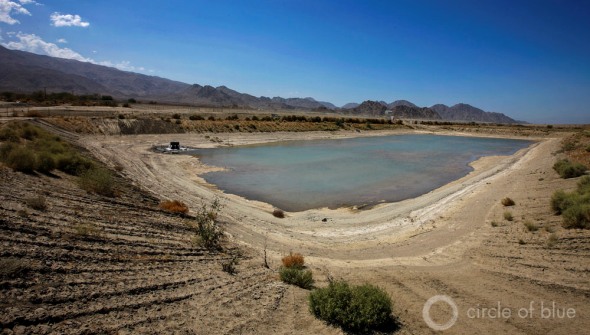UN Report: Water and Energy Face Off on an Uneven Playing Field
To meet rising demands for both resources, greater harmony will be necessary.

By Brett Walton
Circle of Blue
The world’s growing hunger for energy, particularly in booming China, India, and the Middle East, will increase the potential for conflicts over water resources, according to a United Nations report on the connections between water use and energy consumption.
Though the production and consumption of each resource influences the other, current economic policies and political preferences skew the competition heavily in favor of energy, states the fifth edition of the World Water Development Report, released Friday in conjunction with World Water Day.
Examples of energy’s dominance abound. For instance, the desire for biofuels, driven by government targets, is adding new demands to the water footprint of agriculture, consumer of 80 percent of the water that humans use. Massive hydroelectric dams are pinching nerves from the Amazon Basin to the Nile River and the Mekong Delta. And fossil fuel subsidies – both to producers and consumers – pump up demand and deplete and pollute already-stressed water systems.
–Richard Connor, lead author
World Water Development Report
National lawmakers – the report’s intended audience – have many options for responding to these challenges. They can invest in technologies that trap and exploit wasted heat, thereby making energy generation more efficient and reducing the need for new facilities. They can install more wind turbines, solar panels, and geothermal wells, which use little water at all. They can promote integrative policies that look at energy and water in concert.
Yet several obstacles must be overcome, the report notes. To start, better data is needed to understand the tradeoffs and benefits in this menu of options. Policymakers must also transcend what the report calls energy’s “great political clout.”
“Because water is not managed around its economic value, whereas energy is seen as an economic value, the tendency is to make decisions with respect to energy and ignore the water limitations,” said Richard Connor, the report’s lead author and chief science officer for Unisfera, a Montreal-based consulting firm.
Connor told Circle of Blue that this neglect of water may pencil out in the short term, but it comes with significant long term consequences.
“At the end of the day if you [ignore water] you’re saving money but you’re just going to increase water scarcity,” Connor noted. “Eventually the cost of running out of water will be huge.”
A Rising Tide of Demand
Global electricity demand is forecasted to rise by 70 percent by 2035, both to fuel the growth of emerging economies in Africa, Asia, and the Middle East and to bring electric light to the estimated 1.3 billion people who do not flip a switch when the sun sets, but rather burn wood, dung, and charcoal to illuminate the dark.
“That 70 percent figure is really huge,” Connor said. “If we’re going to stick with this 80 percent thermal power mix, it’s going to push water hard.” Thermal power includes coal, natural gas, and nuclear plants, which together account for most of the world’s electricity generation.
Also by 2035, global water withdrawals for energy production will increase by 20 percent while water consumption for energy production will rise by 85 percent, according to the report, which relies heavily on data from the International Energy Agency. Consumption will outpace withdrawals due to an anticipated shift toward power plant cooling technologies that pull less water out of rivers and lakes but evaporate more of it.
New growth in energy demand is happening almost entirely outside of the rich world. Most of the growth comes from fossil fuel sources.
In the Choke Point: China reporting project, Circle of Blue found that China plans to double its electrical generating capacity by 2020, adding as much capacity as currently exists in the United States. Half of China’s new capacity will come from coal-fired power stations.
The story of water and energy is also a story about the world’s poorest citizens. Energy poverty is well correlated with a lack of drinking water and sanitation. The UN estimates that 768 million people lack access to safe drinking water facilities, but others reckon that as many as 3.5 billion people – half the world’s population – drink polluted water. Those without water often do not have electrical connections at home.
“We’re talking about the same set of people,” Connor said.
Learning by Example
The 230-page report makes no specific recommendations for how to meet these challenges. Rather, it seeks to provide a clear-eyed view of current knowledge so that those in charge have the best available information.
The report does put the spotlight on a few successful adaptations. Twelve case studies from four continents illustrate ideas that integrate water and energy use.
In Vienna, Austria, for example, turbines placed in the city’s drinking water supply pipes generated 65 million kilowatt-hours of electricity in 2011 while reducing hydraulic pressure within the pipes to suitable levels.
In the sun-soaked Arabian Peninsula, the six countries of the Gulf Cooperation Council are testing facilities that use solar power to take the salt out of sea water. Saudi Arabia’s rulers launched the King Abdullah Initiative for Solar Water Desalination in 2010. The goal: a complete conversion of the kingdom’s desalination plants to solar power by 2019.
And in Japan, green energy was lifted to a national priority in the wake of the March 2011 earthquake and tsunami that crippled the Fukushima Daiichi nuclear plant. At least three municipal governments are harvesting gas from sewage sludge.
The report notes that these examples are the exception, not the rule. However, they are a cause for optimism.
“It is our heartfelt belief,” the authors write, “that building the momentum in such initiatives will bring incommensurate rewards: environmental sustainability and poverty alleviation at the global level.”
Brett writes about agriculture, energy, infrastructure, and the politics and economics of water in the United States. He also writes the Federal Water Tap, Circle of Blue’s weekly digest of U.S. government water news. He is the winner of two Society of Environmental Journalists reporting awards, one of the top honors in American environmental journalism: first place for explanatory reporting for a series on septic system pollution in the United States(2016) and third place for beat reporting in a small market (2014). He received the Sierra Club’s Distinguished Service Award in 2018. Brett lives in Seattle, where he hikes the mountains and bakes pies. Contact Brett Walton








Leave a Reply
Want to join the discussion?Feel free to contribute!